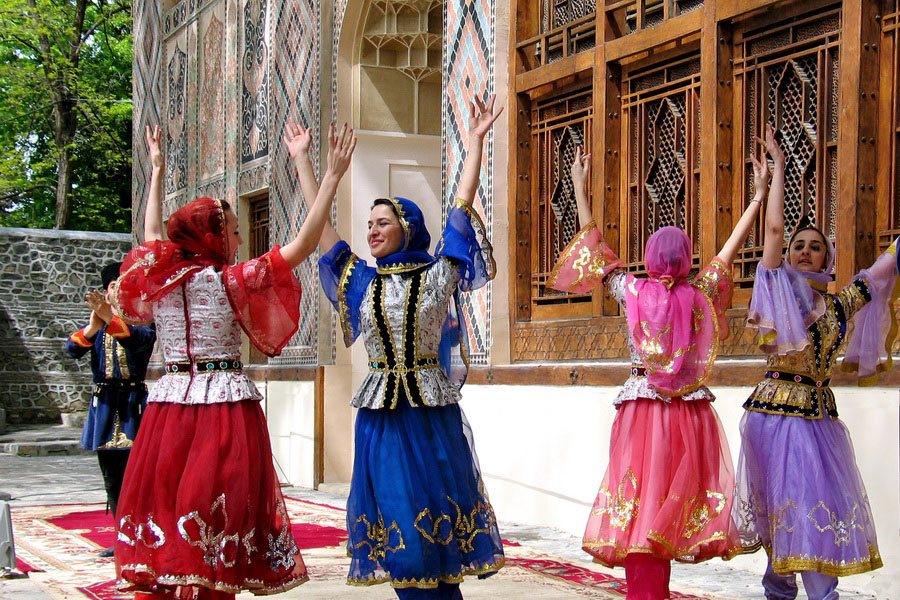
Azerbaijani music and dance are some of the most expressive forms of local art, having been perfected over the course of 4,000 years. Today they are apt reflections of the traditions of diverse civilizations which have inhabited the region across the years.
Music accompanies Azerbaijanis throughout their everyday life and at weddings, funerals, festivals and other life events. The most defining feature of Azerbaijani music is mugham, a musical form in which one or two singers perform while accompanied by musical instruments. The essence of mugham is improvisation expressed through alternating vocal and instrumental parts. Since 2009, Azerbaijan has held the annual World of Mugham Festival in order to promote and preserve this traditional music form long central to culture of Azerbaijan. Mugham has also been inscribed on the UNESCO Intangible Heritage List. In addition to mugham, each region of Azerbaijan boasts of its own distinct musical styles which serve to reflect local history and thought.
Beautifully choreographed and emotionally-charged dances go hand-in-hand with Azerbaijani music. Traditional Azerbaijani dance took the form of ritual performances which were developed to accompany important events, enrich storytelling or simply to please the audience. Depictions of some of the first dances performed in the land can be seen among the petroglyphs of Gobustan.
In traditional Azerbaijani dance, men and women are usually separated. Female dances are slower and noted for their smooth, seamless motions, accompanying facial expressions and exaggerated use of the head and hands. In contrast, men's performances rely on speed, jumps and regular, rapid movement of the legs.
The most beloved Azerbaijani dances include:
- Asma Kasma, one of the oldest wedding dances in the country. It is a slow and slightly exaggerated female performance that accompanies the bridal procession to the bridegroom's home;
- Banovsha, which depicts the sprouting, blooming and fading of violets and is performed during the Novruz holiday;
- Gangi, a fast-moving martial arts dance originally performed during war time as a call for national unity, friendship and invincibility;
- Yalli, a traditional Azerbaijani dance that originated in Zoroastrian times as a ritual performance in celebration of fire. During the dance, performers clasp hands and form a circle as their moves accelerate from slow, deliberate steps to rapid-fire movements.

